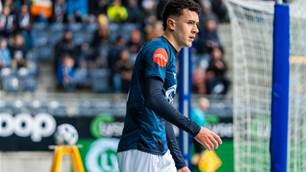West Ham midfielder Kate Longhurt has added to the chorus of unease growing over what some players deem rampant inequality in women's football.
Longhurst said that while much of the conversation regarding sports equality for female footballers has centered around the pay disparity to their male counterparts, star women's footballers have been earning far more than the bottom tier.
“Personally, I think before we worry about equality within men’s and women’s football, there's huge inequalities within women's football for doing the same exact job,” she wrote on Twitter.
"Some on well over 100,000 a year, some on under 20,000 a year but can't work other jobs as it's full time.
“But the contracts for the 'bigger' players will keep getting more and more while players trying to do the same thing will still be scrapping to get by. Never mind the commitment needed for Championship players... same demands, even less pay. Just a thought.”
The pay disparity is particularly evident within Australian women's football, as while Sam Kerr is reportedly the highest paid women's footballer in the world on a multi-million dollar contract at Chelsea, many W-League players are on the minimum remuneration of just over $16,000 per season.
Unfortunately this growing inequality will be hard to rectify in upcoming seasons as while FFA and individual A-League clubs face financial turmoil, the WSL and other European leagues increasingly attracting Matildas go from strength to strength.
That, and the improved Matildas CBA agreements, have led to a stark chasm within the two classes of Australian female footballer.
A new look at CBA agreements, with a greater focus on a whole of women's football approach, may be one of the possible future solutions to improve W-League pay, although without attracting more fans in the stands, this may prove difficult.
Regardless, given the hard-fought battle to pay the Matildas a world-leading wage deal, it's a question of how to improve W-League salaries, not reduce Matildas and WSL salaries, that strikes at the heart of an ever-expanding issue.
Related Articles

Champion A-League coach set to join Premier League giants

Emerging Socceroos star set to sign for MLS club













